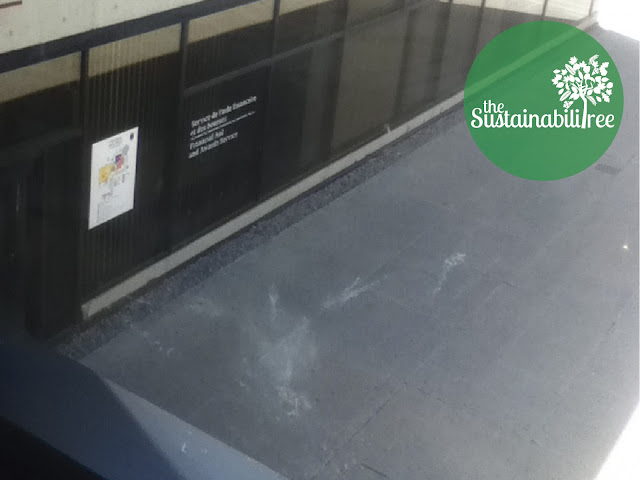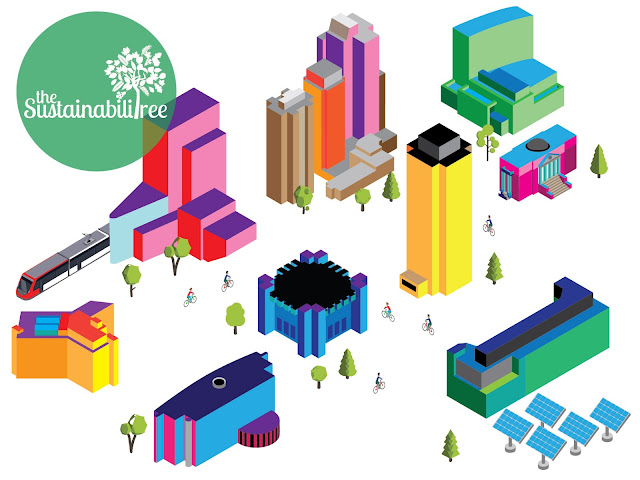Il est difficile de décider par où commencer, mais je pense que la meilleure façon de commencer est de dire que tout ce projet a commencé sur Instagram (je parie que vous n'entendez pas cela très souvent !)... Il y a environ un an, je faisais défiler ma page, aimant des posts à gauche et à droite comme nous le faisons tous, lorsque je suis tombée sur une publicité concernant un nouveau programme que la World Wildlife Fund (WWF) avait mis en place pour les étudiants universitaires/postsecondaires. L'annonce a attiré mon attention et je me suis dit : "Pourquoi ne pas aller voir ?" J'avais un peu de temps libre et quel mal cela pouvait-il faire ? L'annonce ressemblait un peu à ceci (voir ci-dessous) et j'ai pensé que cela pourrait être un excellent ajout à mon CV en pleine expansion, me permettant de m'impliquer davantage dans ma communauté universitaire. J'ai regardé le contenu, j'ai décidé "Hé, je peux le faire !" et je me suis inscri...
Search Blog
Hit enter to search or ESC to close
Featured Posts
Posts
- Get link
- X
- Other Apps
Posted by
uOttawaSustain
Community Clean-Ups & Claiming Certificates with Claire
It’s hard to decide where to begin, but I think the best way to start is by saying that this whole project began on Instagram (I bet you don’t hear that very often!)… About a year ago I was scrolling through my page, liking posts left and right as we all do, when I came across an advertisement about a new program that the World Wildlife Fund (WWF) had put out for university/post-secondary students. It caught my eye and I decided “Why not check it out?”, I had some spare time on my hands and what harm could it do? The ad looked a little something like this (see below) and I thought it might be a great addition to my growing resume; allowing me to get further involved in my university community. I looked through the contents, decided “Hey, I can do this!” and signed up right away. When my friends heard about this new initiative, they asked questions like “Why would you do this, it has nothing to do with your program or future career?”, and to that I say: why the heck not? The Living Pla...
- Get link
- X
- Other Apps
Posted by
uOttawaSustain
Bird Friendly Corridor at uOttawa
I don't think that I need to convince you that birds hitting windows and dying is a bad thing. Bird collisions with buildings is right at the top of the list of bird fatalities ( along with cats ), and with the huge decline of migratory birds in recent years, it makes sense that large institutions do what they can to help reduce collisions. So here is the first problem. There are no vertical transparent surfaces in nature, thus birds are completely unaware that they are about to hit a window. Birds are often confused because they see the reflection of a tree in the window and try to land on the tree. University campuses are usually covered in windows (modern buildings tend to have lots of windows to let in natural light and convey transparency... also they look cool). And, university campuses have a lot of trees. So mix these two things together and you get a lot of reflected trees causing bird collisions. The second problem has to do with the solutions, in that they are expensive....
- Get link
- X
- Other Apps
Posted by
uOttawaSustain
Student Blog - Is Irresponsible Sourcing the New Fashion ‘Faux Pas’?
It appears most are aware that the fashion industry is wasteful, but consumers and corporations are not doing everything they can to help correct this. The entire concept of fashion has been used as a symbol of status for many years. The significance that the fashion industry puts on materiality is toxic to the environment. A 2019 Business Insider article says this industry “produces 10% of all humanity's carbon emissions, is the second-largest consumer of the world's water supply, and pollutes the oceans with microplastics”. In addition, “85% of all textiles go to the dump each year. And washing some types of clothes sends thousands of bits of plastic into the ocean”. We cannot put all the blame on the corporations producing the clothing, because we the consumers often look for quantity over quality. With everchanging fashion trends, consumers move towards fast and cheap fashion to keep up. There are many ways we can reduce our environmental footprint as consumers. We can ...
- Get link
- X
- Other Apps
Posted by
uOttawaSustain
So What is uOttawa Doing About Sustainability These Days?
Last year for Earth Day, we recapped the top 50 things uOttawa has done in the past decade to be a more sustainable campus. We promised to never try to put out that much content in one day ever again... but then 2021 happened and we didn't have to because everyone else at uOttawa shared their stories for Earth Day. Here is a recap of all the Earth Day messages that we could find shared around the campus. And you can check out our website to see some of the highlights. Impact Rankings uOttawa participates in the Times Higher Education Impact Rankings, which track an institutions progress on the United Nations Sustainable Development Goals. We had some outstanding results this year! Flying Less in Academia Researcher Ryan Katz-Rosene has helped author a resource guide on Flying less in Academia . The guide is meant to help reduce the carbon footprint of academics. Canadian Plastics Pact Sustainable Prosperity, an environmental think-tank on campus, has helped launch the Canadian Pla...
- Get link
- X
- Other Apps
Posted by
uOttawaSustain
Student Blog - Calling on uOttawa to Innovate Plastic Recycling
This semester we are featuring a series of blog posts from students in the ENV 2301 course "History of Environmental Thought". We are super happy to highlight the thoughts and ideas of these bright young individuals. A student working with Poly plastic recycling machine, (Poly Plastics, 2020). The University of Ottawa is dedicated in its mission to create a sustainable campus that uses innovation and technology to push towards a green future. The Office of Campus Sustainability is a pillar in this mission. They engage students by creating interactive campaigns that are hard to miss on campus, all while generating conversation around how to be more environmentally conscious. Campaigns often focus on waste diversion and engage the community where students have the chance to show off their favourite reusable mug for a free coffee or connect with local farmers while picking up a weekly produce box . Although the University of Ottawa has made sustainable steps towards a waste-fr...
- Get link
- X
- Other Apps
Posted by
uOttawaSustain
What Has COVID Taught us About How to Restructure the University Campus
One year in and we are can sort of see the light at the end of the tunnel. With a COVID vaccine on the way, we can take comfort that many of the restrictions we see today will be toned down. But, with vaccines having an efficacy rate of up to 95%, that could still potentially mean a lot of cases after everyone is inoculated. (5% of Canada's population of 35 Million = 1,750,000 potential cases across the country after vaccination, but herd immunity will slow down and prevent infections) So it is prudent to think that there will still be the need for some COVID precautions after mass vaccine campaigns are finished. But beyond COVID, there are other reasons we might want to keep up some precautions. This time last year, Canada had reported over 26,000 cases of the flu, and this year there were 57 ... IN THE ENTIRE COUNTRY!!! Clearly, with a bit of prudence, there can be a significant drop in communicable diseases. At the start of the summer of 2020, people were venturing outsid...
- Get link
- X
- Other Apps
Posted by
uOttawaSustain
FAQs - What if Every Roof Was a Green Roof at uOttawa
After our last post about green roofs at the University of Ottawa, I got a lot of questions about why we can't have green roofs everywhere on campus. If the answer was simple, I wouldn't have to write a entire blog post about it... but since I am writing a post... you can probably take the hint that this is a bit more complicated then a yes/no kind of thing. As a quick reminder, the University has a design imperative in place that implies green roofs will be installed in any case where the building can take the weight without a new support system, that the building is still going to be around in 20 years, or if the roof wouldn't serve better as a place for solar panels. Photo credit - kingcounty.gov HOW MUCH CO2 COULD WE SEQUESTER? First thing people were asking me about was sequester CO2. If roofs can take carbon out of the air, why not do more of this? Of course all plants sequester CO2 but a green roof can't do as much as a tree and certainly not as much as a peat bo...
- Get link
- X
- Other Apps







